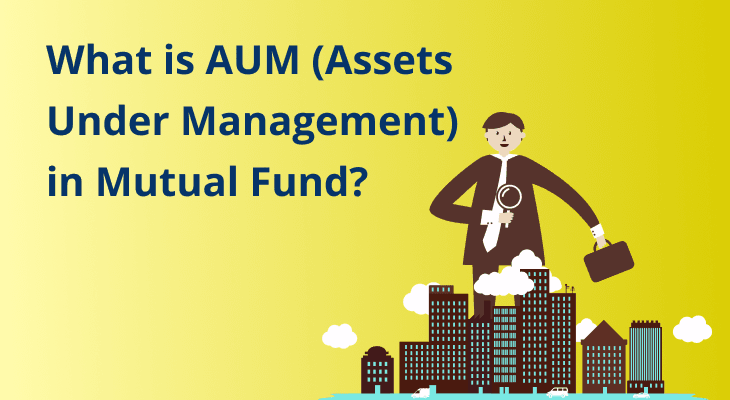
What is Assets Under Management (AUM) in Mutual Fund?
Assets Under Management (AUM) is a key metric in the mutual fund industry, representing the total market value of investments managed by a fund on behalf of its investors. It serves as a crucial benchmark for assessing a fund’s size, credibility, and performance capacity. Whether you're a new investor or a seasoned one, understanding AUM can help you make informed decisions and evaluate mutual funds effectively. This article explores the meaning, significance, and various aspects of AUM in mutual funds, guiding you through its role in investment strategies.
What is AUM (Assets Under Management)?
Assets Under Management (AUM) represents the total market value of assets a mutual fund manages on behalf of its investors. This includes the combined value of securities such as stocks, bonds, and other investments within the fund. AUM fluctuates based on factors like market performance, investor inflows, and redemptions. It acts as a key indicator of a fund's size, credibility, and ability to attract investors.
Why is AUM Important in Mutual Funds?
AUM plays a critical role for both fund managers and investors due to the following reasons:
Indicator of Fund Popularity: A higher AUM suggests that the fund has gained investor trust, often reflecting consistent performance. It also, usually, translates to higher liquidity, ensuring smoother fund operations.
Operational Efficiency: Funds with larger AUMs may benefit from economies of scale, potentially leading to lower expense ratios. This is also supported by SEBI’s guidelines, as explained later on in this article.
Performance Stability: Funds with higher AUMs are less prone to volatility caused by sudden large-scale redemptions, while funds with lower assets under management may be more volatile in nature.
Market Credibility: High AUMs often signal reliability, encouraging new investors to consider the fund, which in turn can further increase the assets under management of the AMC.
How is AUM Calculated?
AUM is calculated by summing up the current market value of all the securities held by the fund, along with cash reserves and any additional assets under its management. Key factors affecting AUM calculation include:
Market Fluctuations: Changes in the market prices of securities directly impact AUM.
Net Inflows/Outflows: New investments increase AUM, while redemptions reduce it.
Dividends and Interest: Reinvested dividends or interest earned contribute to AUM growth.
Here’s an example:
As mentioned earlier, the calculation of Assets Under Management (AUM) considers the market value of all assets held within a mutual fund. It includes both current investments and any appreciation in their value over time. Here’s how the calculation works:
Example:
Initial Investment: Suppose a mutual fund starts with ₹10 crore in investments contributed by investors.
Additional Contributions: During the year, more investors add ₹5 crore.
Appreciation in Value: Due to market performance, the total investments grow by 10%.
AUM Calculation:
Start with the initial investments: ₹10 crore.
Add new contributions: ₹10 crore + ₹5 crore = ₹15 crore.
Apply the 10% growth: ₹15 crore × 1.10 = ₹16.5 crore.
Total AUM: ₹16.5 crore.
This demonstrates how AUM reflects both inflows and market appreciation, making it a dynamic measure of a fund's size.
The Relationship Between AUM and Expense Ratio
The total expense ratio (TER), which measures the annual operating costs of a fund as a percentage of its AUM, is closely linked to the AUM size:
Inverse Relationship: Larger AUMs often lead to lower expense ratios due to operational efficiencies.
Investor Impact: A lower expense ratio means reduced costs for investors, directly influencing their net returns.
Fund Manager Incentives: Fund managers aim to grow AUM to optimise expense ratios and attract more investors.
Furthermore, the Securities and Exchange Board of India (SEBI) has put forth some guidelines regarding the TER percentage for different types of funds with varying assets under management.
TER (Total Expense Ratio) by AUM Slabs:
For Equity Funds:
AUM up to ₹500 crores: TER is 2.25%
AUM ₹ 500 - ₹750 crores: TER is 2.00%
AUM ₹ 750 - ₹2,000 crores: TER is 1.75%
AUM ₹ 2,000 - ₹5,000 crores: TER is 1.60%
AUM ₹ 5,000 - ₹10,000 crores: TER is 1.50%
AUM ₹ 10,000 - ₹50,000 crores: Starts at 1.50% and reduces by 0.05% for every ₹5000 crore increase in AUM.
AUM above ₹50,000 crores: TER is 1.05%
For Debt Funds:
AUM up to ₹500 crores: TER is 2.00%
AUM ₹500 - ₹750 crores: TER is 1.75%
AUM ₹750 - ₹2,000 crores: TER is 1.50%
AUM ₹2,000 - ₹5,000 crores: TER is 1.35%
AUM ₹5,000 - ₹10,000 crores: TER is 1.25%
AUM ₹10,000 - ₹50,000 crores: Starts at 1.25% and reduces by 0.05% for every ₹5000 crore increase in AUM.
AUM above ₹50,000 crores: TER is 0.008%
Factors Influencing AUM Growth - H2
Several factors contribute to the growth of assets under management in a mutual fund, including:
Performance of Underlying Assets: Positive returns from securities boost AUM.
Market Trends: Bullish market conditions generally lead to AUM expansion.
Investor Behaviour: A fund’s reputation and past performance influence investment inflows.
Distribution Network: Strong marketing and distribution channels can attract a larger investor base, leading to a higher AUM.
Limitations of AUM as an Indicator
While AUM provides valuable insights, it has certain limitations:
Not a Performance Guarantee: A high AUM doesn’t necessarily indicate superior returns.
Potential Overcrowding: Large funds might struggle to deploy capital effectively, affecting performance.
Focus on Past Performance: AUM growth may reflect historical success rather than future potential.
How Investors Should Use AUM Data
When evaluating a mutual fund, consider AUM alongside other factors:
Fund Objective Alignment: Ensure the fund’s goals match your financial objectives.
Historical Performance: Analyse returns over different market cycles.
Expense Ratios: Compare with similar funds to gauge cost efficiency.
Portfolio Composition: Assess the diversification and risk level of the fund’s holdings.
Conclusion
Assets Under Management (AUM) is a vital metric for assessing mutual funds, offering insights into their size, credibility, and operational efficiency. While AUM is an important factor, it should be considered alongside other aspects such as performance, expense ratios, and investment objectives to make informed decisions. By understanding the nuances of AUM, you can better navigate the mutual fund landscape and optimise your investment strategy.
FAQ
What is AUM in a mutual fund?
Assets Under Management (AUM) is a key metric in the mutual fund industry, representing the total market value of investments managed by a fund on behalf of its investors. It serves as a crucial benchmark for assessing a fund’s size, credibility, and performance capacity. Whether you're a new investor or a seasoned one, understanding AUM can help you make informed decisions and evaluate
Why is AUM important in mutual funds?
AUM indicates a fund's popularity, liquidity, and operational efficiency. Higher AUM often correlates with stability and lower expense ratios, benefiting investors.
How is AUM calculated?
AUM is calculated by summing up the current market value of all the assets held in a mutual fund’s portfolio, adjusted daily based on market changes.
Does higher AUM mean better returns?
Not necessarily. While higher AUM indicates investor trust, returns depend on the fund’s investment strategy, portfolio quality, and market conditions.
What is the relationship between AUM and expense ratio?
Funds with higher AUM often have lower expense ratios because operational costs are spread over a larger base of assets, reducing individual costs. This is also in line with SEBI’s guidelines around the fund size and associated TER levels.
Can AUM fluctuate?
Yes, AUM changes daily due to market movements, investor inflows, and redemptions. Market value fluctuations of the underlying assets also impact AUM. For example, during a bullish market the AUM can rise while it may decline during a bearish market.
Is a fund with low AUM risky?
Is a fund with low AUM risky?
How does AUM affect fund liquidity?
When an AMC has higher Assets Under Management, it typically means better liquidity of its units, enabling a smoother redemption process for the investor and operational flexibility for the fund.
What’s the difference between AUM and NAV?
AUM is the combined value of all assets managed by the fund. On the other hand, NAV (Net Asset Value) is the per-unit value of the fund for investors. Both of these metrics serve as an important tool for the comparison of funds.
Should AUM be the sole criteria for fund selection?
No. AUM is essential, but it cannot be taken as a standalone criterion for fund selection. Along with it, you should also consider its performance, risk profile, expense ratio, and the fund manager’s expertise for a balanced evaluation.


